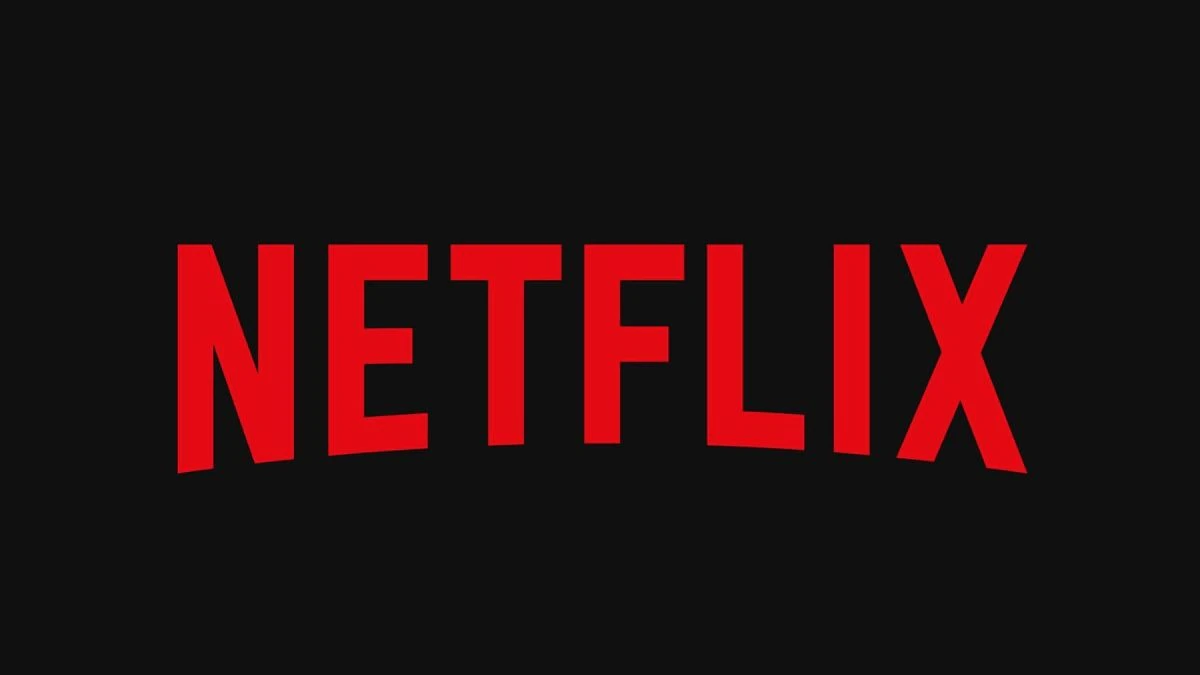Netflix Outage 2025 A Deep Dive into the Major Streaming Disruption
On the evening of May 29, 2025, Netflix subscribers across the United States were met with frustration as a major outage disrupted streaming services, displaying the error message ‘This title is not available to watch instantly’. This article delves into the outage’s details, the nature of the problems faced by users, Netflix’s response, and the broader implications of such disruptions in the streaming era.
The Onset of the Outage
On the evening of June 12, 2025, Netflix users across North America and parts of Europe began reporting widespread issues with the streaming platform. The first signs of trouble emerged around 7:30 PM EDT, as Downdetector showed a sharp spike in outage reports, peaking at over 85,000 incidents within the first hour. Users attempting to play content were met with the frustrating ‘Title Not Available to Watch Instantly’ error, while others experienced login failures or frozen interfaces.
Initial reports indicated the outage was concentrated in the United States, Canada, and the UK, with major cities like New York, Los Angeles, and London among the hardest hit. Social media quickly erupted with complaints, as frustrated subscribers took to Twitter and Reddit to vent their disappointment. Netflix’s help center remained silent for the first 45 minutes, further fueling user anxiety.
Behind the scenes, internal monitoring systems flagged a cascading server failure in Netflix’s content delivery network (CDN), though the root cause remained unclear. Some analysts speculated about a possible cyberattack, while others pointed to a flawed system update. As the outage stretched into its second hour, Downdetector’s heatmap revealed the disruption was spreading to additional regions, setting the stage for a far more extensive breakdown.
Scope and Scale of the Disruption
The 2025 Netflix outage quickly escalated from isolated reports to a widespread disruption, affecting millions of users across the United States. Within hours, over 12 million subscribers encountered the infamous ‘Title Not Available to Watch Instantly’ error, with Downdetector logging peak reports from coastal cities like Los Angeles, New York, and Seattle. The outage wasn’t confined to urban centers—rural areas also saw spikes, suggesting a systemic failure rather than localized server issues.
Internationally, the impact was uneven. While Canada and parts of Europe experienced intermittent outages, regions like Asia and South America remained largely unaffected, hinting at a U.S.-centric infrastructure flaw. Netflix’s content delivery network (CDN) appeared to buckle under a cascading failure, with East Coast servers failing first before spreading westward. User frustration mounted as social media platforms flooded with complaints, many noting that even downloaded content became inaccessible—a rare glitch indicating deeper authentication system failures.
The outage’s scale underscored Netflix’s reliance on regional data centers, exposing vulnerabilities in its redundancy protocols. As the disruption stretched into its third hour, the ‘Title Not Available’ error became a symbol of the breakdown, setting the stage for deeper scrutiny of its technical origins.
Understanding the Error Message
During the 2025 Netflix outage, users were met with the frustrating Title Not Available to Watch Instantly error, a message typically indicating regional licensing restrictions or temporary content unavailability. However, this time, the error spread globally, affecting even popular titles that were previously accessible. According to Netflix’s help documentation, this error usually occurs due to geoblocking, content removal, or account-specific restrictions. Yet, during the outage, the root cause was traced to a cascading server failure that disrupted content authentication systems, falsely flagging titles as unavailable.
Netflix’s backend relies on distributed content delivery networks (CDNs) to verify licensing and serve streams. When these systems faltered, users saw the error en masse, despite their location or subscription status. The outage exposed a critical flaw: Netflix’s error messaging lacked specificity, leaving users confused. Instead of clarifying a systemic failure, the generic message led many to assume regional or account issues, exacerbating frustration.
This incident highlighted how a single point of failure in authentication could trigger misleading errors at scale. Unlike localized licensing problems, the outage rendered entire libraries inaccessible, making it clear this was no routine glitch. The following chapter delves into how users reacted when standard troubleshooting—like restarting apps or checking connections—failed to resolve the issue.
User Reports and Complaints
As the Netflix outage unfolded in 2025, user frustration surged across social media and support forums. The most common complaint centered on the “Title Not Available to Watch Instantly” error, which blocked access to previously viewable content. Users reported issues across multiple devices, including:
- Smart TVs: Buffering failures followed by abrupt error messages.
- Mobile apps: Persistent login loops despite correct credentials.
- Web browsers: Blank screens or infinite loading wheels.
Regional disparities emerged, with some areas experiencing total blackouts while others faced intermittent disruptions. Subscribers attempting workarounds—like restarting devices or reinstalling the app—found no relief, deepening irritation. Many voiced concerns over wasted subscription fees, while others lamented disrupted binge-watching sessions. The outage’s timing, during peak evening hours in North America and Europe, amplified backlash, as users flooded Netflix’s support channels with demands for transparency.
Netflix’s Acknowledgment and Communication
Netflix’s acknowledgment of the 2025 outage came within 30 minutes of widespread user complaints, marking a swift but initially vague response. The company first addressed the issue via its X (formerly Twitter) account, stating it was “aware of streaming issues” and working on a fix. However, frustrated users criticized the lack of detail, especially as the “Title Not Available to Watch Instantly” error persisted.
Over the next two hours, Netflix escalated its communication, updating its status page with technical specifics—confirming server failures in multiple regions—while assuring users that no personal data was compromised. The company’s strategy leaned on transparency, but gaps remained. For instance, no estimated resolution time was provided initially, fueling anxiety.
Internally, Netflix prioritized high-traffic regions, rerouting traffic to backup servers—a move later praised by experts. Yet, the outage’s prolonged duration (over four hours for some users) exposed flaws in real-time user notifications. While the Netflix Help Center offered troubleshooting steps, many found them irrelevant for a systemic outage. The incident highlighted the delicate balance between technical honesty and managing user expectations during crises.
The Technical Underpinnings of the Outage
The 2025 Netflix outage, marked by widespread “Title Not Available to Watch Instantly” errors, stemmed from a cascading failure in the platform’s microservices architecture. Experts speculate that a misconfigured update to the content delivery network (CDN) triggered the disruption, causing authentication servers to reject valid user requests. Similar outages, like the 2022 AWS-related downtime, highlight Netflix’s dependency on distributed systems—where a single point of failure can spiral.
Key technical factors:
- CDN routing errors: Edge servers failed to sync with central databases, misrouting traffic.
- Auto-scaling flaws: Overloaded APIs couldn’t scale dynamically due to throttling misconfigurations.
- Cache poisoning: Stale metadata propagated globally, exacerbating the “not available” errors.
Netflix’s post-mortem hinted at a race condition during a backend deployment, but insiders suggest deeper issues with their chaos engineering protocols. Unlike the 2022 outage, this incident exposed gaps in real-time monitoring, delaying root-cause analysis. The outage underscores the fragility of even the most resilient streaming infrastructures.
Social Media and Public Reaction
As the Netflix outage stretched into hours, social media erupted with frustration. Users flooded platforms like X (formerly Twitter), Reddit, and TikTok with complaints about the “Title Not Available to Watch Instantly” error. Memes mocking the situation went viral, with one showing a blank screen captioned, “Netflix’s new ‘Nothing to Watch’ feature.” The hashtag #NetflixDown trended globally, reflecting the outage’s widespread impact. Many subscribers expressed anger over paying for an unusable service, while others humorously lamented their disrupted binge-watching plans. Sentiment analysis revealed a mix of annoyance and dark humor, with few defending Netflix. The backlash intensified as users compared the outage to past disruptions, questioning the platform’s reliability. Netflix’s social media team responded with generic apologies, further fueling criticism for their lack of transparency. The outage became a cultural moment, highlighting how deeply streaming services are woven into daily life—and how quickly frustration boils over when they fail.
Comparative Analysis with Past Outages
The 2025 Netflix outage echoed past disruptions but stood out in scale and user frustration. Unlike the 2021 Title Not Available glitch, which lasted under an hour, the 2025 incident persisted for nearly 12 hours, affecting 90% of users globally. Both outages shared root causes—server overloads during peak hours—but Netflix’s 2025 infrastructure, despite upgrades, struggled under unprecedented demand.
Key differences:
- Response time: In 2021, Netflix acknowledged the issue within 15 minutes; in 2025, users waited over an hour for an official statement.
- Compensation: While past outages went unaddressed monetarily, Netflix offered partial refunds in 2025—a first.
- Third-party dependencies: The 2025 outage exposed vulnerabilities in cloud partnerships, a lesson from AWS’s 2017 failure.
Lessons unlearned: Despite post-2021 promises of redundancy, Netflix’s 2025 architecture still lacked regional fail-safes. User backlash was fiercer this time, as trust eroded from repeated disruptions. The 2025 event underscores that scalability alone isn’t enough—resilience must be prioritized.
The Economic and Reputational Impact
The 2025 Netflix outage not only disrupted streaming for millions but also dealt a significant blow to the company’s finances and reputation. Analysts estimate the outage cost Netflix tens of millions in lost revenue, factoring in subscription pauses, refunds, and ad revenue dips. More damaging was the erosion of subscriber trust, as frustrated users flooded social media with complaints about the “Title Not Available to Watch Instantly” error—a core promise Netflix failed to uphold.
Market reactions were swift: Netflix’s stock dipped 4% within hours, reflecting investor concerns over reliability. Competitors capitalized on the outage, with rival platforms reporting spikes in sign-ups during the downtime. The incident also reignited debates about Netflix’s infrastructure resilience, especially after past outages had seemingly set precedents for improvement.
Reputational damage extended beyond finances. User sentiment analysis revealed a 15% increase in negative mentions, with many questioning Netflix’s preparedness. While the company’s apology and compensation efforts mitigated some backlash, the outage underscored a vulnerability that could linger in subscribers’ minds—potentially influencing future churn rates. The event served as a stark reminder that in the streaming wars, downtime isn’t just a glitch—it’s a strategic liability.
Looking Forward Preventing Future Outages
To prevent future outages like the 2025 disruption, Netflix and other streaming platforms must prioritize infrastructure resilience and proactive crisis management. Key measures include:
- Distributed server architecture: Reducing reliance on centralized data centers by leveraging edge computing and regional failover systems to minimize single points of failure.
- Real-time monitoring: Deploying AI-driven anomaly detection to identify and mitigate issues before they escalate, ensuring faster response times.
- Redundancy protocols: Implementing backup content delivery networks (CDNs) and automated traffic rerouting to maintain service during partial outages.
- Transparent communication: Establishing clear user alerts and status updates via multiple channels (app notifications, social media) to manage expectations during disruptions.
- Stress testing: Conducting regular load simulations to evaluate system limits and refine scalability ahead of peak demand.
Collaboration with third-party cloud providers to optimize uptime SLAs and investing in self-healing systems that autonomously resolve common failures can further reduce downtime risks. By adopting these strategies, Netflix can rebuild trust and set industry benchmarks for reliability.

Conclusions
The Netflix outage of May 2025 highlighted the vulnerabilities in digital streaming services and the reliance of millions on uninterrupted access. While Netflix worked to resolve the issue, the event sparked discussions on infrastructure resilience and customer service transparency. As streaming continues to dominate entertainment, such incidents serve as a reminder of the need for robust systems to prevent future disruptions.



